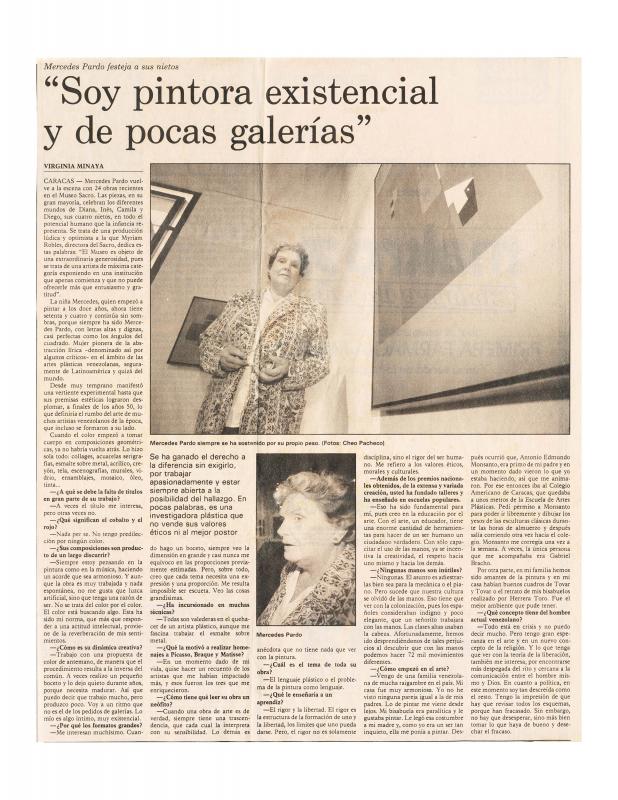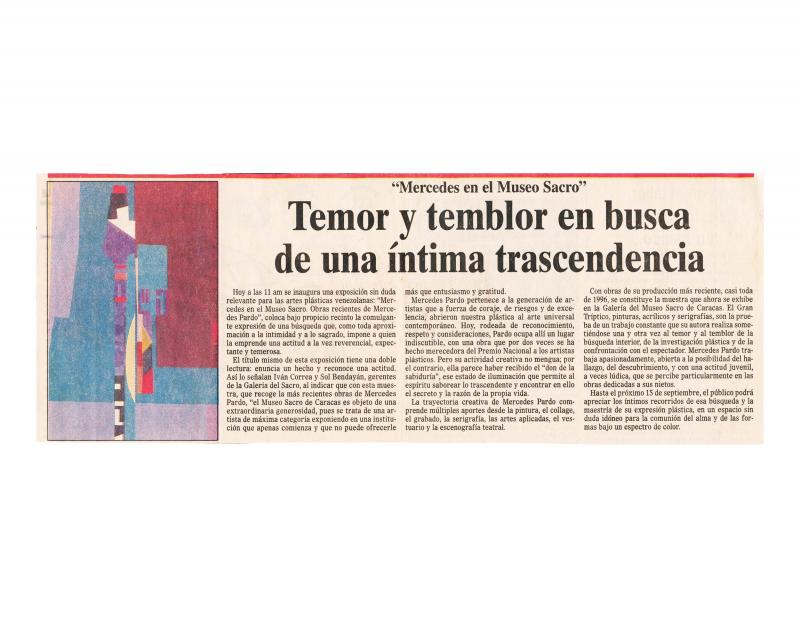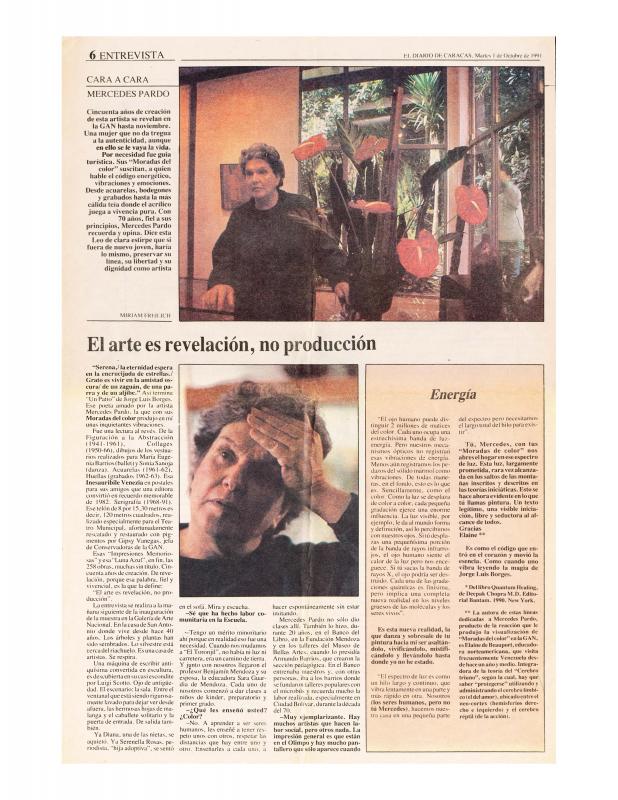Venezuelan journalist Yasmin Monsalve interviews the artist ahead of Mercedes en el Museo Sacro. Obras Recientes de Mercedes Pardo (August 11–September 15, 1996), held in the Galeria del Sacro, the exhibition spaces of the Museo Sacro. The twenty-four works on view were made between 1987 and 1996. Mercedes Pardo (1921–2005) explains that most of the paintings and screenprints are recent, except for a few ones previously shown at her 1991 retrospective exhibition at the GAN (Galería de Arte Nacional), Moradas del Color. Monsalve points out that Museo Sacro is a new institution and therefore highlights Pardo’s generosity in showing her work there; she explains her attraction to the place due to affective connections to the area.
The show comes after “five years of silence,” and confirms her creative process defined as “slow,” due to the lack of improvisation, fruit of a coexistence of rigor and freedom. Her intuitive step, she argues, needs to be followed by attentive reflection. Pardo shares her concerns for being considered by galleries as an artist that “doesn’t produce.” The commodification of art is a theme that recurs also in other interviews; so that she elaborates on her differentiation between “invention” and “creation.” Artists had fought for the importance of “creation” as opposed to “representation,” however, by 1996 Pardo no longer needs to defend the choice of abstraction but rather the choice of unique or limited number of copies. She blames the deterioration of art systems, pointing out that the prizes of institutions like the Venice and São Paulo biennials are assigned before the event has even taken place.
[For other articles on the Museo Sacro exhibition of Pardo’s work, see in the ICAA Digital Archive: Gustavo Jaén, “El azul y más allá” (doc. no. 1331004); Virginia Minaya, “Soy pintora existencial y de pocas galerías” (doc. no. 1331020); and Anonymous, “Temor y temblor en busca de una íntima trascendencia” (doc. no. 1331053). For further reading on Pardo’s views on the commodification of art, see Minaya’s text already mentioned, and Miriam Freilich, “El arte es revelación, no producción” (doc. no. 1325266).]




